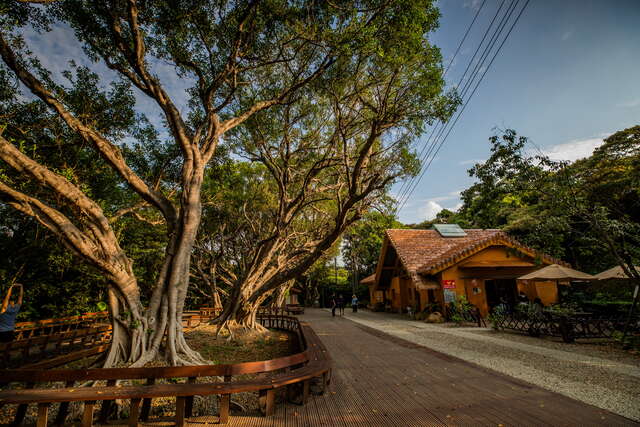Wujiantong Mountain Trail Introduction
After conquering the Yangchou Forest Trail, is the sense of adventure in your body still eager for more? The nearby Wujiaotong Mountain Trail awaits your passionate challenge, allowing you to experience Luzhu from a different perspective! The Wujiaotong Mountain Trail spans approximately 4 kilometers, connecting five routes with an elevation difference of about 80 meters, helping you work up a sweat and push your limits! Regarding the origin of the name Wujiaotong Mountain, one theory suggests that during the Ming Zheng period, Mr. Tsai Guang-sheng, who relocated here with his five sons, was fond of drinking and had a strong tolerance for alcohol, often finishing a barrel of wine in one setting, thus the name Wujiaotong Mountain. Another explanation is that villagers would bring their cattle here to drink water, hence the name "Niushuitong Mountain," which later phonetically transformed into Wujiaotong Mountain. Every holiday, the Nankuan Temple on Changxing Road is always crowded with people, including many worshippers and hikers. Entering the Nankan Mountain Trail from the parking lot of the Nankuan Temple, you will find the "Yingguang Caring Steps," a wide stone staircase built by enthusiastic mountain friends, consisting of 170 steps for a gentle and safer ascent. Continuing along the cement path, passing by the Chunqiu Pavilion, you will reach the summit of Nankan Mountain, which stands at 155 meters. The peak has a third-order triangulation point, offering stunning views of the Taiwan Strait and the international airport. From here, you can take the Liufu Trail, which is a more secluded and undulating dirt path, just like the original stone staircase path, leading to Wujiaotong Mountain. After passing the Wangyou Pavilion, you will occasionally see five stacked wine jars along the way, guiding visitors to the rest platform on Wujiaotong Mountain, where a statue of Guanyin stands. This area is also a junction for other trails; continuing straight will lead you to the ancient road connecting to the Fude Ancient Road. Turning left will take you to the steeper Haishan Road and the Huan Mountain Trail, converging at the Luntou Fude Temple, a cultural wonder known as the "Temple within a Temple," attracting many travelers. The trail culminates at the summit of Shanjian Mountain, where the autumn sea of silver grass is a must-see magical scenery.








































